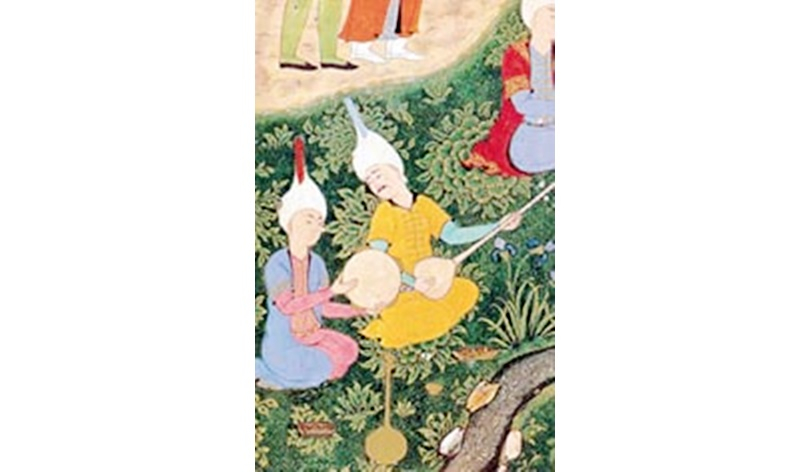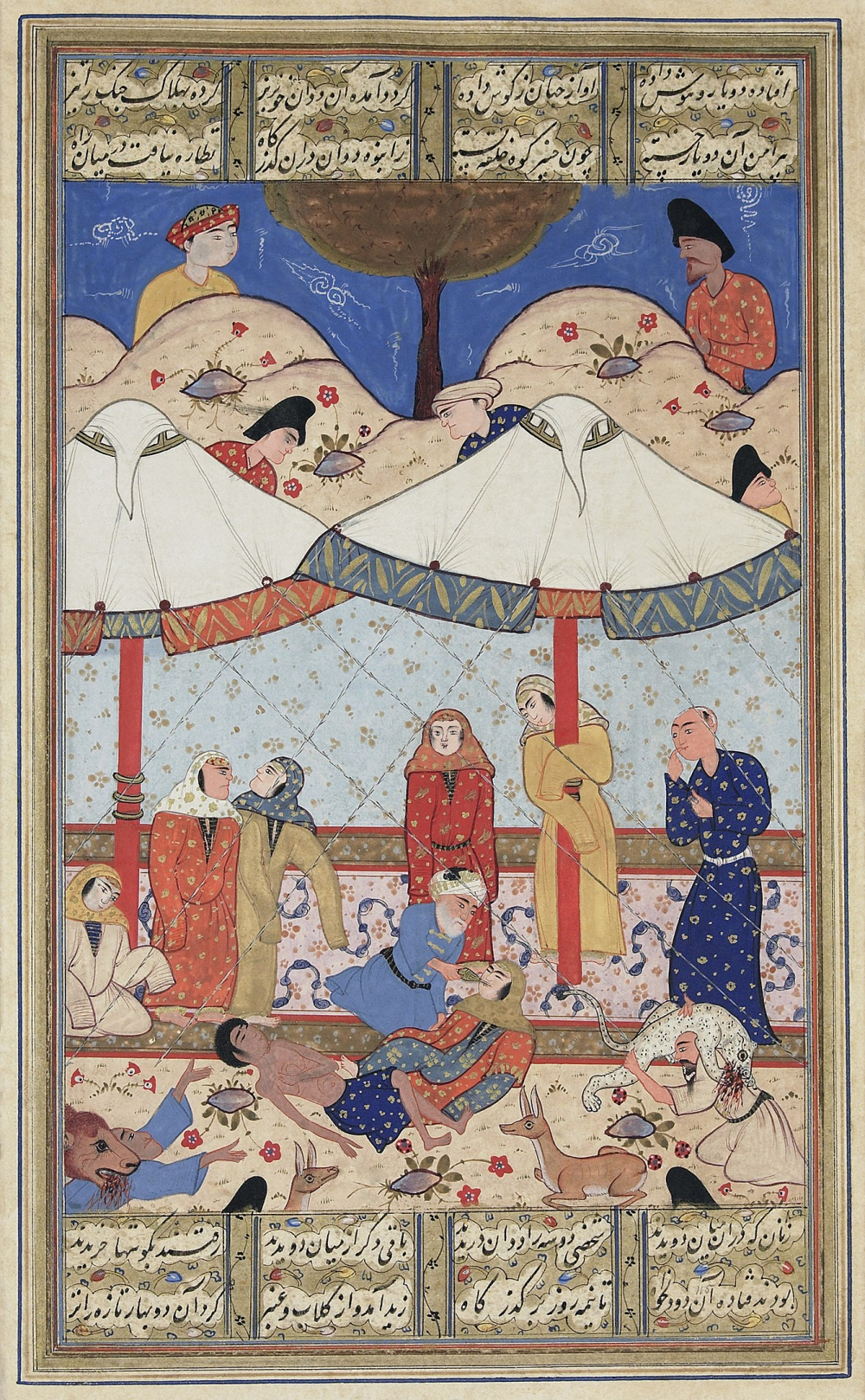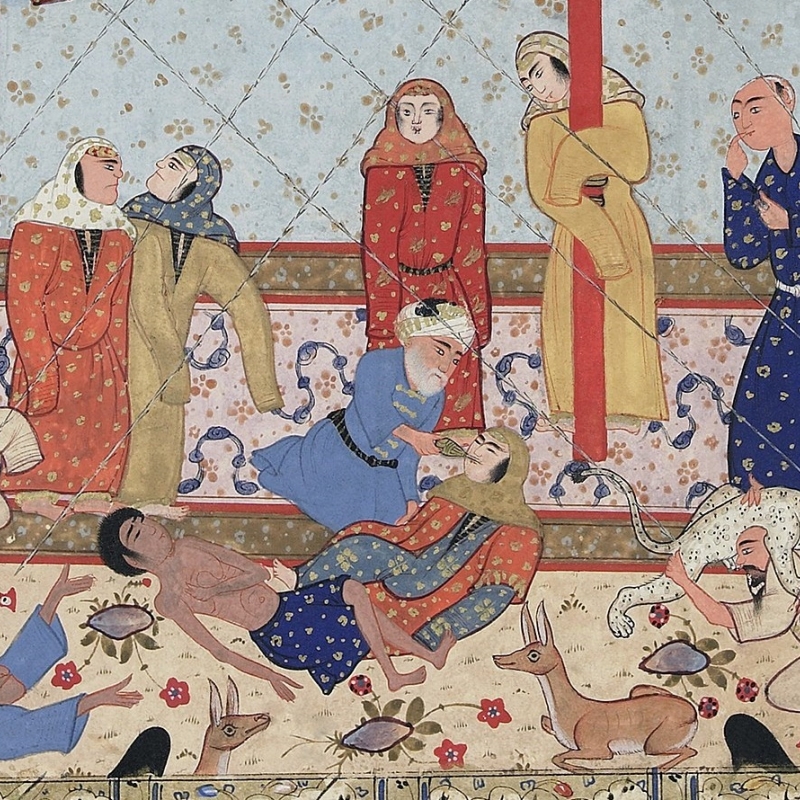Nizam al-Din Abu Muhammad Ilyas bin Yousuf, known popularly, and simply, as Nizami, was one of the greatest Persian poets. Prof. B.N. Goswamy talks about the author of ‘Laila wa Majnun’ and his contribution to literature through the five-part Khamsa (Photo courtesy: Library of Congress/Wikimedia Commons)
This article appeared originally in The Tribune, Chandigarh under the title ‘Nizami: Mystic, Epic Poet’ and is reproduced here with permission.
“This book is an ornament of the page of time, . . . deeper than the pearl of pure water, . . . delineated as it were by the pen of Providence upon the Tablet of Life . . .”
Not for those perhaps who have had no brush with its literature, but for almost everyone who inhabits the Persian-knowing world, there are some names that keep resonating in the air: Firdausi, S’adi, Hafiz, Hatifi, Jami, Khusrau Dehlavi, among them. But to that distinguished list also belongs Nizam al-Din Abu Muhammad Ilyas bin Yousuf, known popularly, and simply, as Nizami, one of the greatest poets who wrote in the language. The century in which he lived may have been the twelfth—he was born in the Hijri year 535 which works out to 1140–41 of the Christian calendar—but, in the eyes of the lovers of Persian, he belongs to all times, or, to put it differently, all time belongs to him. This seems to be only too true, if the number of manuscript copies of his greatest work, the Khamsa, which have survived, and the span of time over which illustrated copies of it kept being turned out by scribes and painters—generation after succeeding generation—serve as any indication. The work has endured, like few others have in the world of literature.
Also read | The Dynamics of Bhakti
Nizami did not conceive what is called the Khamsa—a Quintet, in other words—as a single, unified work consisting of five parts, but it has so happened over the years that the five separate works are all spoken of, and brought, together, within the same covers. This gifted man of retiring disposition in fact wrote the five works—each of which has a different subject—at intervals, and dedicated them to different patrons, even though, in his own words, "the bustle of princes’ courts is not for me". Each work has a different flavour, and those versed in Persian are able to recognize passages from them almost at sight, or sound. The first, called Makhzan al-Israr, meaning ‘A Treasure of Mysteries’, is permeated by the spirit of Sufism, the poet himself being a person who had a very ascetic view of life. But the work is not dry and didactic, and has passages of remarkable beauty, like the celebrated one "On Old Age", which are woven into simple tales that have become, across the centuries that have passed, a part of the repertoire of every man literate in Persian. The second work, Khusrau wa Shirin, drawn upon some historical incidents from the life of the Sassanian prince, Khusrau Perwiz, is however entirely different in tenor. The poem is of epic proportions but, as Nizami wrote it, the heroic element in it recedes into the background, and the romantic takes over, the poet bringing in at the same time penetrating psychological insights into the minds of the lovers.

The third work, Laila wa Majnun—names that mean something to almost everyone, specially young lovers—is among the most celebrated in Persian literature, even though Nizami was, at least initially, not happy with the choice of the subject which a patron asked him to write on ("it is dry as the Arabian desert", the poet is said to have remarked privately). But it turned out, in the end, to be Nizami’s greatest work perhaps, certainly his most successful. In the fourth, the Iskandar Nama, Nizami took up the theme of Alexander the Great—who is regarded in the world of Islam as a philosopher-king—and turned it into a virtually encyclopaedic work touching, poetically, upon diverse branches of knowledge, allowing the poet to delve deep into the mysteries of the scientific world and of that which lies within us. Finally, the fifth: the Haft Paikar—"Seven Beauties"—telling the tale of the Sassanian, Bahram Gur, and his seven brides who dwelt in seven different chambers, each story associated with a week, a planet, and a colour. Subtle and complex, the work is widely regarded as "a masterpiece of Oriental story-telling", the "grotesque and gruesome fantasy of which has never been surpassed".
Also see | A Language of Heterogeneity: The Poetry of Namdeo Dhasal
The painters who were called upon—again and again, in virtually every century that passed after Nizami—to embellish the manuscripts of the Khamsa which lovers of literature hungered for, may not necessarily have been aware of the greatness of Nizami’s poetic achievement. Or of the fact that it is he who, through his brilliance, was resolving, "the antithesis between the language of the lyric and the archaic style of the epic", as one critic has remarked. But they were able to work out a repertoire of their own, culled from passages in the five works that constituted the Khamsa. In manuscript after illustrated manuscript, we see the old woman approaching Sultan Sanjar, and addressing to him probing questions, exactly as Nizami had described it in his Makhzan al-Israr; Khusrau secretly espying the beauty of Shirin as she sat bathing in a stream; Majnun, the hapless lover, sitting, emaciated and desolate, surrounded by wild animals who look upon him with wonderful sympathy; or the princess of China seated in her pavilion utterly drenched, saturated, in the colours appropriate to the week in question. There is excitement in these painted folios, some manuscripts, because of the sheer brilliance with which the painters envisioned Nizami’s passages, turning into virtual "Treasures of Mysteries". But, before one can approach these treasures, one has to have the courage, and the imagination, to unlock the doors of the world to which they belong.

Safavid Splendour
Among the most sumptuous of the illustrated manuscripts of Nizami’s Khamsa in existence, is the one now in the Metropolitan Museum of Art, New York. Scripted in 1525, and painted possibly by Shaikh-zada, when the art of painting at the Safavid court of Persia was at its zenith, the manuscript has a quality of preciousness, and elegance, that is not easy to match, even in the range of great works produced at that glittering court. As one turns the pages of the manuscript, one can almost hear the rustle of silks, savour the delicacies laid out for kings, feel against one’s cheeks the freshness of the air blowing through those balmy gardens. Incidentally, the lines cited above as an epigraph are not by some well-known writer or critic, but by some former owner who composed them and wrote them in his own hand—at some remote point of time—on the end-papers of the manuscript copy of the Khamsa now in the Metropolitan. "Beyond measure, and great, is the amount of the beautiful writing on its rose leaves", he also added.
This article has been republished as part of an ongoing series Art N Soul from The Tribune.













